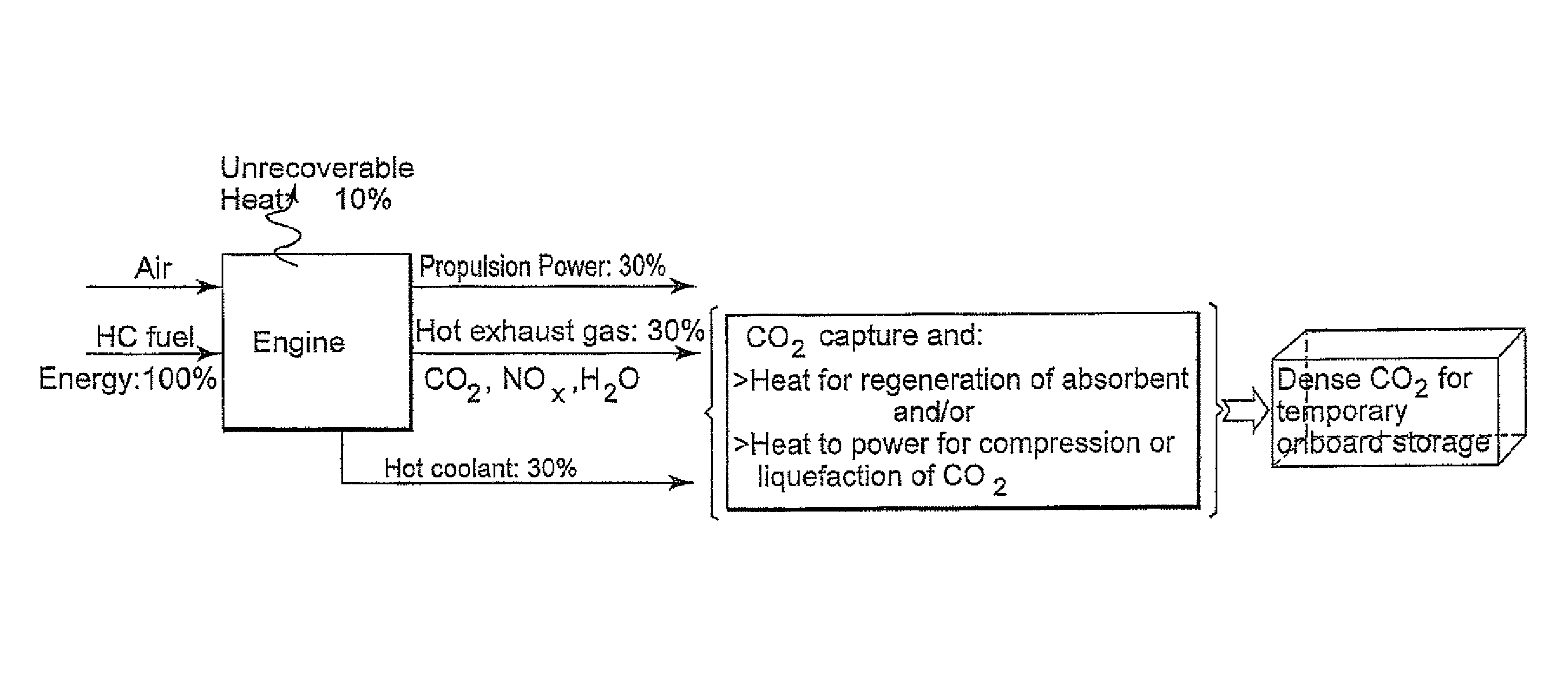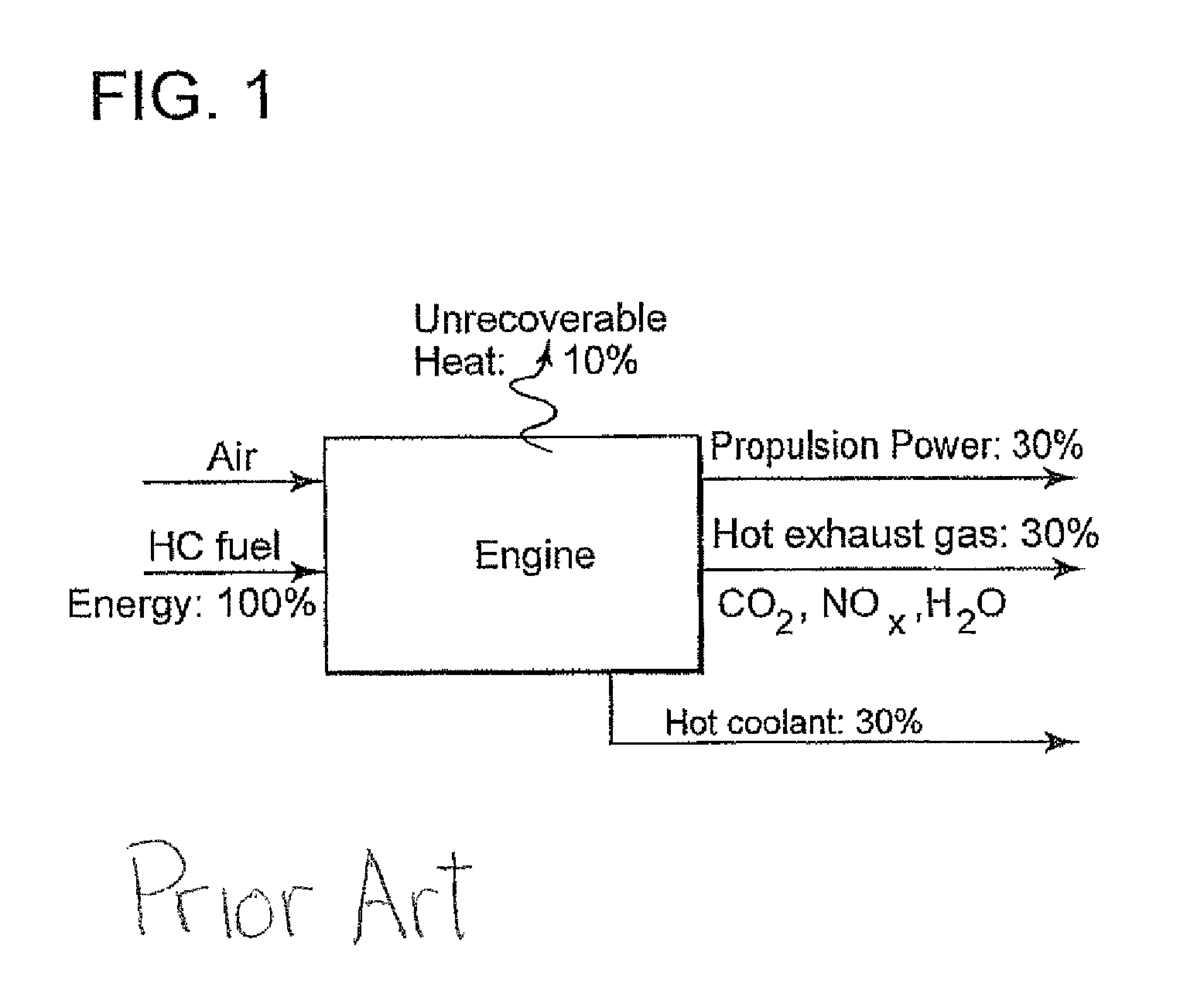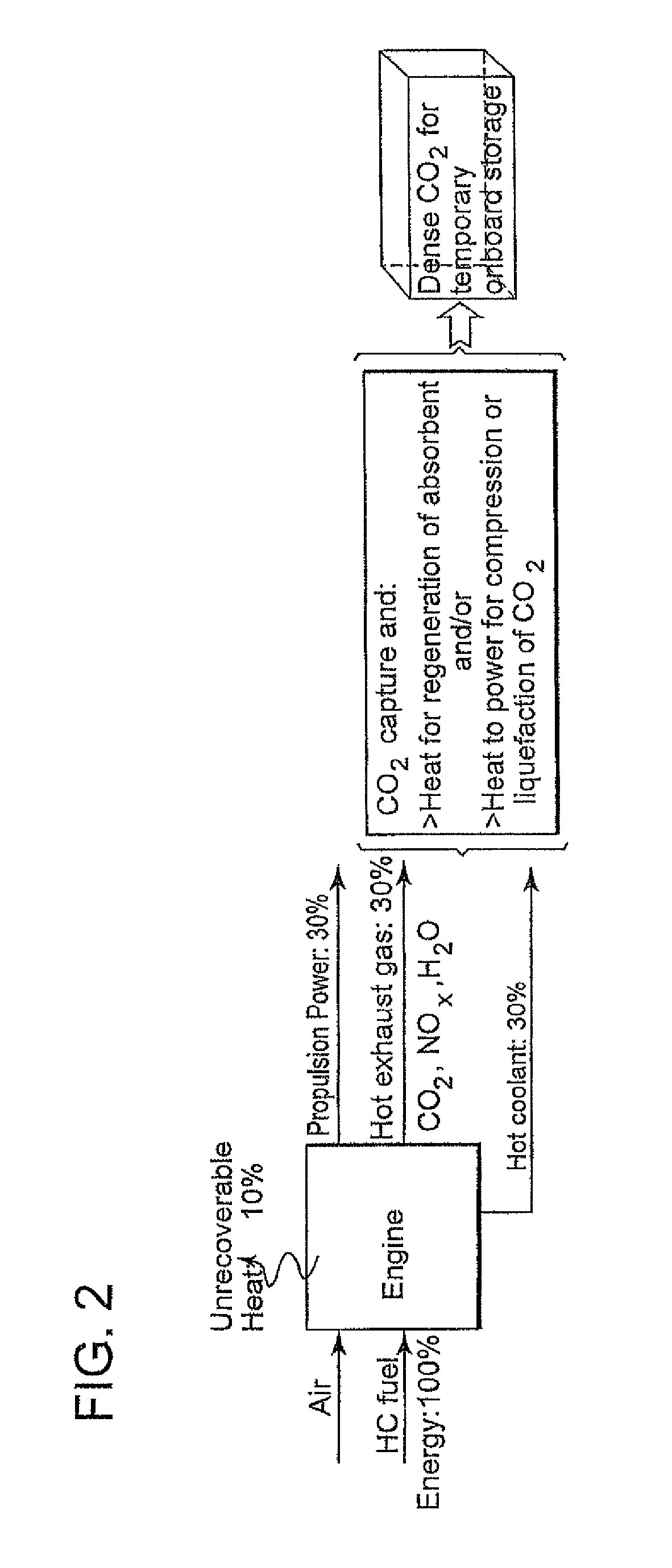Reversible solid adsorption method and system utilizing waste heat for on-board recovery and storage of CO2 from motor vehicle internal combustion engine exhaust gases
a solid adsorption and waste heat technology, applied in the direction of machines/engines, energy input, separation processes, etc., can solve the problems of lack of any economies of scale, space and weight limitations, and carbon dioxide management from mobile sources, so as to reduce co2 emissions, maximize fuel energy values, and high to moderate temperature waste heat
- Summary
- Abstract
- Description
- Claims
- Application Information
AI Technical Summary
Benefits of technology
Problems solved by technology
Method used
Image
Examples
example 1
[0109]This example describes the preparation of a solid CO2 sorbent for use in the process of the invention by what is referred to as a gelatin process. An amount (395 g) of magnesium carbonate hydroxide (MgCO3.Mg(OH)2×H2O) was added to 800 ml of a solution of sodium carbonate (42.18 g) and sodium nitrate (21.63 g) dissolved in deionized water. This produced a mixed salt slurry which was stirred for 30 minutes. The slurry was then covered and allowed to sit for 16 hours at ambient temperature, after which it was dried at 120° C. for 16 hours to form a dry cake of MgO:Na2CO3:NaNO3. Analysis showed a mass ratio of 75.8:16:8.2 and a molar ratio of Mg:Na of about 4.8. This dry cake was then calcined by heating from 120° C. to 450° C., at a ramp rate of 3° C. / minute, followed by 450° C. for 4 hours. The calcined cake was crushed and sieved to collect a 150-425 mesh fraction, which is suitable for use in a packed bed with an inert material such as SiC to occupy any remaining volume. Test ...
example 2
[0110]This example describes preparation of a solid CO2 sorbent of the same mixed salt composition for use in invention by what is referred to as a precipitation process. A solution of 233.4 g of Na2CO3 in 3000 ml deionized water was placed in a 5.0 liter plastic beaker, and stirred vigorously with a mechanical agitator. A second solution, of 188.4 g Mg(NO3)2: 6 H2O in 500 ml of deionized water, was pumped into the first solution, at a rate of approximately 30 ml / minute. A slurry resulted which was stirred for an hour. The slurry was stored, overnight, as described supra, and then filtered to yield a wet precipitate cake. About 3200 mls of filtrate were collected. This was dried, at 120° C. for 24 hours to form a dry cake, which was treated a described in Example 1. Test results indicated that the amount of CO2 loaded on the sorbent reached its peak at 325° C., and as with the sorbent from Example 1, the sorbent product from this example was also effective over a wide temperature ra...
PUM
| Property | Measurement | Unit |
|---|---|---|
| temperature | aaaaa | aaaaa |
| temperature | aaaaa | aaaaa |
| temperature | aaaaa | aaaaa |
Abstract
Description
Claims
Application Information
 Login to View More
Login to View More - R&D
- Intellectual Property
- Life Sciences
- Materials
- Tech Scout
- Unparalleled Data Quality
- Higher Quality Content
- 60% Fewer Hallucinations
Browse by: Latest US Patents, China's latest patents, Technical Efficacy Thesaurus, Application Domain, Technology Topic, Popular Technical Reports.
© 2025 PatSnap. All rights reserved.Legal|Privacy policy|Modern Slavery Act Transparency Statement|Sitemap|About US| Contact US: help@patsnap.com



